Top Travel Destination of 2024: This Mediterranean Island Is Flying Under the Radar—For Now
The Balearic Islands, a small and picturesque Spanish archipelago in the Mediterranean, are pretty much paradise epitomized. Despite a tiny square footage, these islands can draw quite the tourist throng. Ibiza is known as one of the most iconic party capitals of the world, and Mallorca is frequented by international travelers seeking white sand beaches. Menorca, on the other hand, tends to fly more under the radar.
Menorca VS. Mallorca
In the ‘90s, when travel was majorly ramping up on Ibiza and Mallorca, Menorca took a different approach in order to prioritize its natural environment and culture. In 1993, the island was declared a UNESCO Biosphere Reserve, allowing the local community to continue to dedicate itself to the preservation of the island’s ecosystem.
Though Menorca has no intention of reaching the tourism levels of its neighboring islands, there’s no denying its star is rising, fueled by a growing number of travelers seeking the kind of experiences that are intrinsic to the island—thanks to the rise of “slow travel.”
What Is Slow Travel?
The slow-travel movement, which largely came out of the Covid pandemic, prioritizes mindful travel experiences that are environmentally conscious and less focused on convenience.
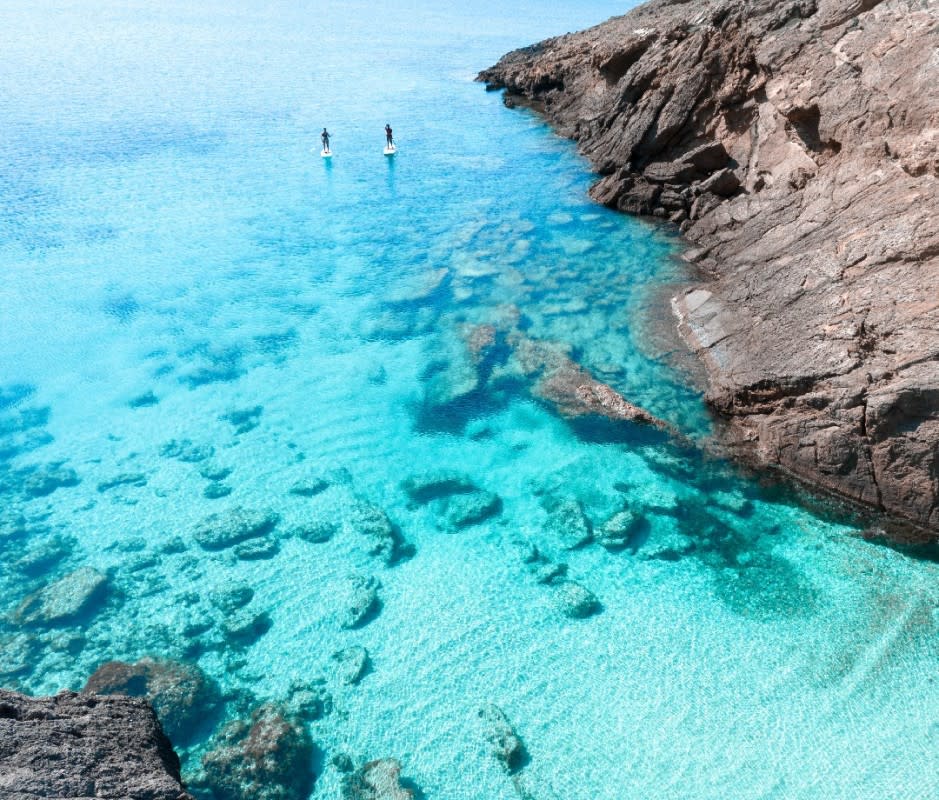
Artur Debat/Getty Images
Rather than hopping on a cruise or booking an all-inclusive beach resort, travelers are seeking ways to explore off-the-beaten-path locations, which yield unique experiences and reduce the negative impact tourism tends to have on popular travel destinations.
This ethos goes hand in hand with Menorca’s dedication to the preservation of its land, as well as its residents’ way of life. The island has announced plans to abandon fossil fuels by 2030, and generate 85 percent of its energy from renewable sources. It’s also campaigning for the protection of its numerous Talayotic archaeological sites, such as Naveta d’es Tudons, to be awarded UNESCO World Heritage status.
Related: 14 Best European Coastal Towns and Cities to Beat the Crowds
In the wider Balearics, visitor accommodations have also been subject to a sustainable tourism tax since 2016, which is funneled back into local environmental projects.
In 2021, the islands spent an impressive $61.5 million on a tourism initiative with sustainability at its core—legally requiring hotels to ditch single-use plastics and install water-saving devices in bathrooms, among other things.
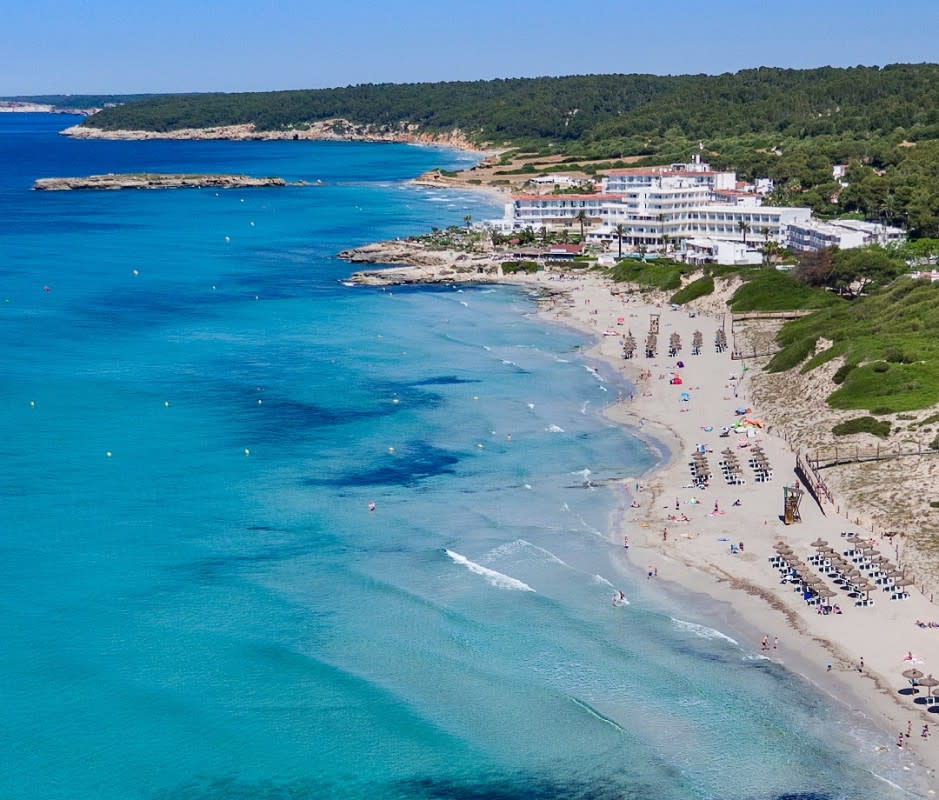
Meliá Hotels International
Menorca Hotels: Where to Stay
For travelers, this takes the guesswork out of knowing whether your tourism dollars are being used for good. The best Menorca hotels are dedicated to providing guests with luxury experiences that are also sustainable at heart.
Our top pick has to be Villa Le Blanc, a new property by Spanish hotel group Meliá, that was built with the intention to create a zero-emission, carbon-neutral property on the island.
“Menorca has one of the most beautiful natural environments in all of Europe,” says Beatriz Ávila, general manager of Villa Le Blanc, a Gran Meliá Hotel. “As a community, we work together to ensure our visitors understand this special environment and aim to bring light to the precious ecosystem.
Related: 10 Best Cities in Greece to Visit to Beat the Crowds
“The island is full of amazing flora and fauna, and diverse landscapes from beaches and valleys to caves, wetlands, and sand dunes,” adds Ávila. “We're extremely aware of the island’s special environmental assets. As a new hotel at Villa Le Blanc, we've worked to ensure the environment remains of the utmost priority to both staff and visitors.”
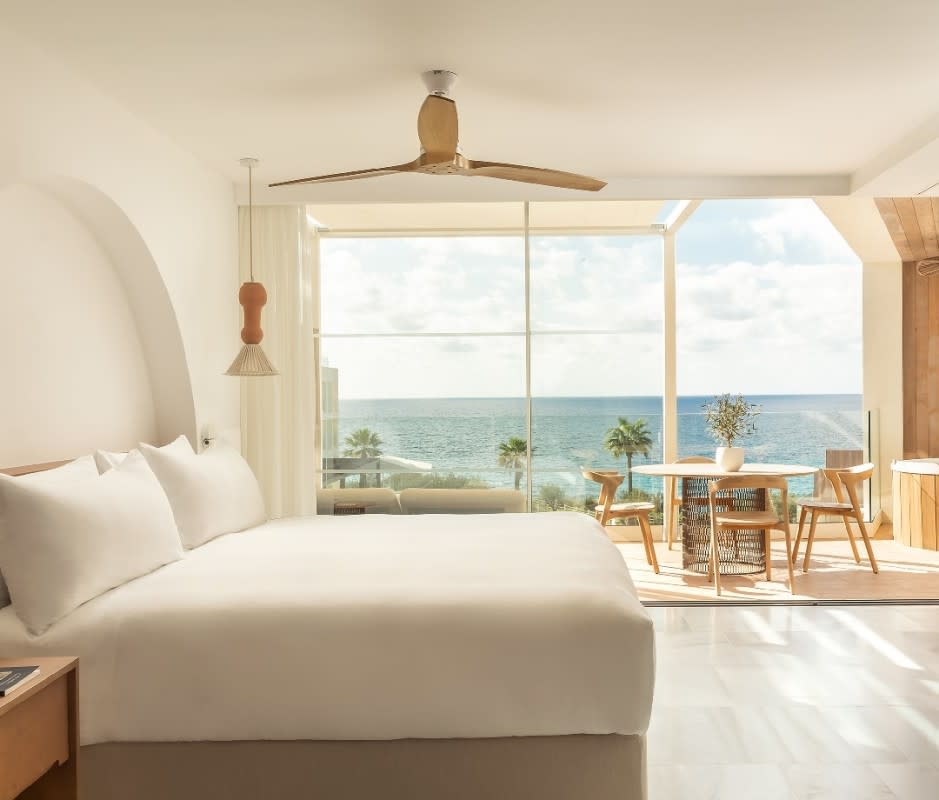
Meliá Hotels International
Located right on Santo Tomás Beach on the island’s south coast, Villa Le Blanc is a sustainably minded luxury property whose design was inspired by Menorcan villages—with sloping archways, whitewashed walls, and an airy layout dotted with pieces created by local artists. Walk through the back and you’ll find a pool deck and views of the ocean, as well as the hotel’s on-site restaurant, S’Amarador.
In an industry rampant with greenwashing (the press stunt of appearing to be green while making minimal efforts to actually be sustainable), hotels on Menorca such as Villa Le Blanc have gone the extra mile to show their respect for their Mediterranean surroundings. Here, geothermal energy is used as a source of renewable energy for air conditioning, solar panels produce clean energy, and high-efficiency thermal insulation systems are set on the exterior of facilities to minimize energy loss—an important function for an island that sees over 300 days of sun per year.
The five-star, carbon-neutral hotel has 159 guestrooms, including 45 suites, many of which have their own private balconies with spiral staircases, daybeds, tubs and/or pools overlooking the Mediterranean.
While a stay there definitely commands plenty of leisure time by the pool, it’s also located right on a scenic shoreline—replete with sprouting wildflowers, turquoise waves, and nude sunbathers. Many travelers who venture to Menorca are also in search of more immersive nature experiences, which are in excess on the island. Steps from Villa Le Blanc, visitors will find a trailhead leading from Playa Binigaus beach through over seven miles of pristine Menorcan woodland.
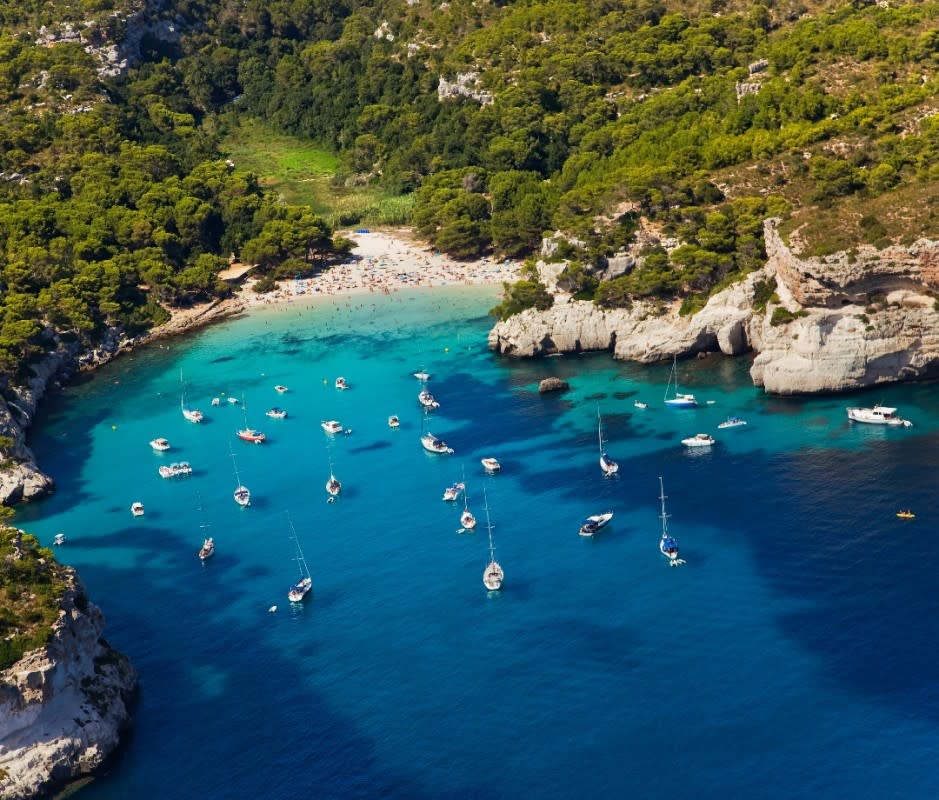
Gonzalo Azumendi/Getty Images
What to Do in Menorca
Slow travel on Menorca is the name of the game, especially considering the fact that taxis and vans are pretty much not a thing here. Sure, you can rent a car to get around, but the fact that you’ll likely be walking a lot is an important consideration when deciding to book a trip to the island, coupled with the fact you’ll be spending majority of your time outdoors.
Related: Tenerife Is an Adventure Hub in Hiding
Best Beaches in Menorca
Like its more crowded Balearic neighbors, Menorca is replete with gorgeous beaches—more than 100, in fact. The difference here is that you aren’t likely to fight for your personal square of beach space, even during high season.
White sand options like Cala en Turqueta or Cala Escorxada are perfect for sun-kissed afternoons perfecting your tan. Ruggedly beautiful options lining the north side of the island, like Cala del Pilar, may require a bit of a hike in, but with an instant payoff: stunning red sand, crystal-clear waters, and likely nobody but you.
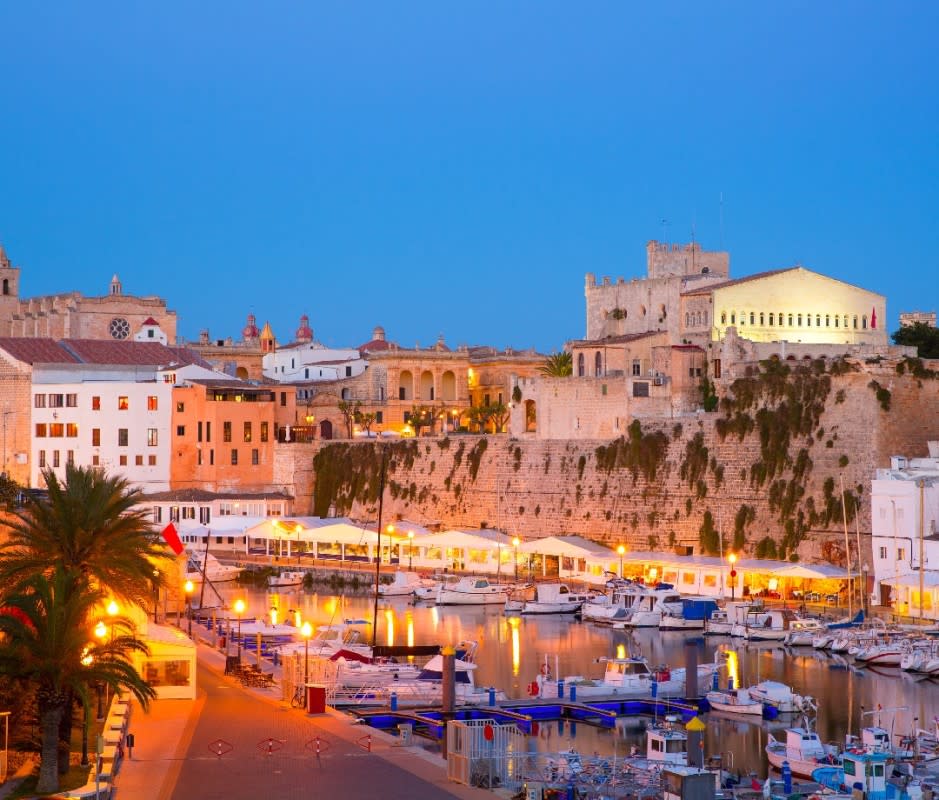
LUNAMARINA/Getty Images
Hiking and Biking
Adventurous travelers will want to allow ample time to traverse La Cami de Cavalls, a centuries-old, nearly 115-mile-long road ringing the island that was historically used by soldiers to monitor and defend the island. It’s now favored by hikers and cyclists, who use it to explore Menorca's varied landscape—from the coast of Es-Grau to the historic port town of Ciutadella.
Must-see stops include a climb up El Toro, the highest point of the island, rewarding sweaty travelers with beautiful panoramic views. On the north side of the island, Parc Natural de s’Albufera des Grau is a unique preserve teeming with ponds, lagoons, inlets, and other stunning hiking hideouts.
Water Sports
By water, you can explore the island's northern Marine Reserve in a kayak, or SUP through postcard-perfect coves like Cala Blanca, Cala Turqueta, and Cala Macarella. All are potential dive sites, or places to simply paddle around and appreciate the sparkling blue waters of the Mediterranean.
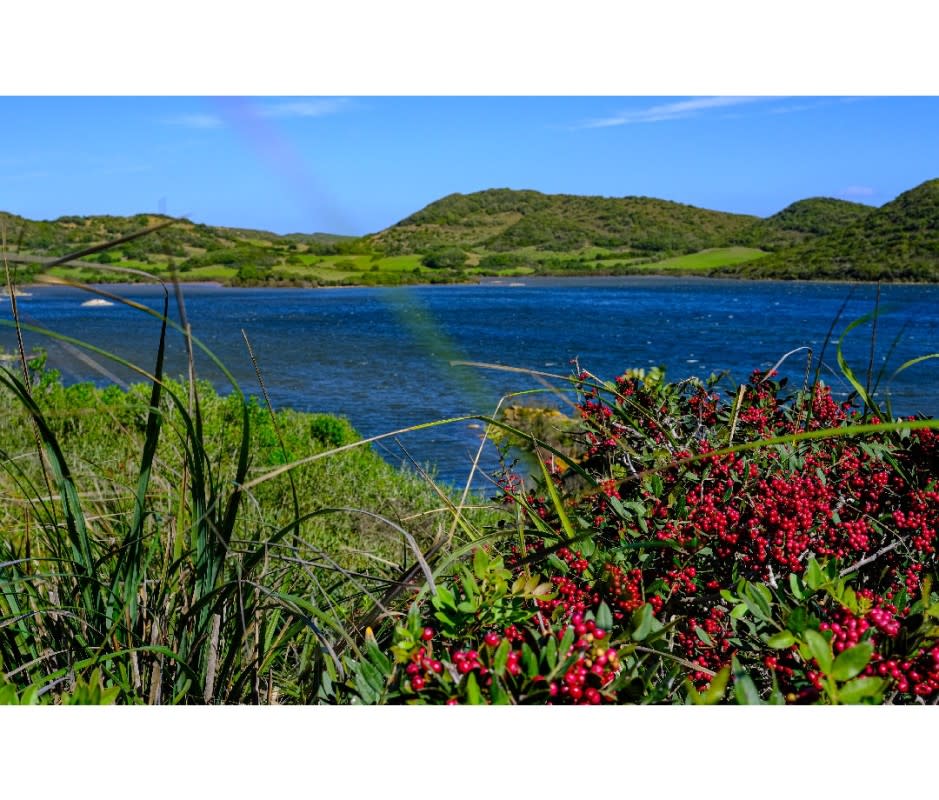
Karzof Pleine/Getty Images
Also set in a cove and worth a visit is the small fishing village of Binibeca—hidden a short distance from the capital of Mahon. Here, white-washed buildings ooze Mediterranean charm and provide yet another example of the island’s innate environmental sensibility, with the white-washing providing the village with a sustainable way to keep interiors cool and combat humidity.
Historic Monuments
Diving even deeper into Menorcan culture, visitors will want to check out some of the island’s nearly 1,600 prehistoric monuments, called talayots. The mysterious structures were originally built by the Talaiotic Culture starting in 9th century B.C., and researchers believe they were used both ceremonially for ritual purposes and tactically as lookout towers. In Trepucó, tour 12 acres of talayot structures and the former homes of Menorca’s earliest inhabitants.
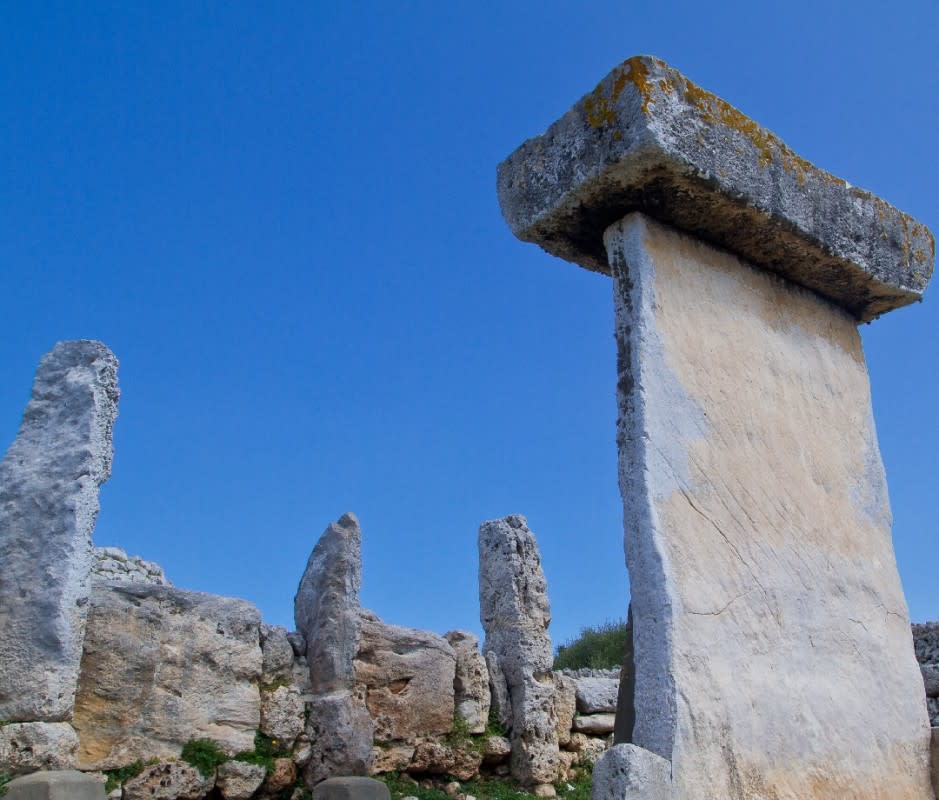
LoPeix/Getty Images
Culture of a different sort is to be found at Hauser & Wirth, an art center and conservation project set on the grounds of an old naval hospital, with galleries and gardens to tour as well as a gorgeous al fresco restaurant nestled into a picturesque grove of olive trees, called Cantina. Dining experiences like this are just one of the reasons why the island was handed the title of European Region of Gastronomy in 2022.
Other unique, local dining options include the fresh-produce markets Maó and Ciutadella, where you can find tapas bars for satisfying any late afternoon appetite. The family-owned Agroturisme Son Vives makes its own cheese and doles out the ultimate Menorcan breakfast from up in the hills in the center of the island.
Back at the hotel, Villa Le Blanc’s own restaurant, S’Amarador, is known as one of the finest seafood spots on an outlier island that firmly has our vote as one of the most alluring and buzz-worthy destinations of 2024.

